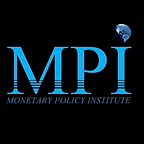The Tightening Noose of Pakistani Monetary Austerity
Daniyal Khan
Assistant Professor, Department of Economics, Lahore University of Management Sciences
While Pakistan’s present circumstances have been recognized as an economic crisis, malaise, or meltdown, it has not been widely acknowledged that the country is in the midst of a proper economic depression. The dynamics and relevant time horizons of a crisis and a depression are very different, and therefore the policy responses must be different as well. The tightening noose of monetary austerity isn’t helping.
In line with the direction, but not the magnitude of expectations, of analysts in the financial sector, the State Bank of Pakistan’s (SBP) Monetary Policy Committee (MPC) announced in its April 4 statement an increase in the policy rate to 21%. This further hiking of the rate comes after the MPC already increased the interest by 3 percentage points up to 20% last month.
Inflation, in the meantime, hasn’t gone anywhere: the year on year rate of inflation is now at 35%. The SBP’s failure to check inflation is completely expected, not because they have been behind the curve, as Uzair Younus argues, but instead because interest rates are not the relevant policy tool for managing the present inflationary pressures. The Pakistani debate on inflation is drowning in monetarism and economic orthodoxy, completely divorced from debates elsewhere which are questioning interest rate hikes.
A terrible toll
To say that the human toll of this inflation is significant would be putting it mildly. As Ariba Shahid reported for Reuters, “[t]he government-mandated minimum wage is about 25,000 rupees, but with inflation at a record 31.5% in February, its highest rate in nearly 50 years, many people who earn much more than that say their salaries do not last the month.”
Meanwhile, according to a survey by the Pakistan Institute of Development Economics (PIDE) last year, a large percentage of people want to leave the country. This desire was reflected in the actual departure of people from the country in 2022 as “[m]ore than 800,000 Pakistanis left Pakistan of 220 million to take up jobs last year, according to regulatory and monitoring body the Bureau of Emigration and Overseas Employment, up from a pre-pandemic total of 625,876 in 2019, and 382,439 the year before that.”
The SBP’s half year report for FY22 also noted that comparatively greater inflation was experienced by the economic quintile with the lowest consumption. The country is seeing its own deaths of despair and some people are paying with their lives simply trying to receive charity.
The character of inflation
The second question is whether the inflation is demand pull or cost push (supply side). The January 2023 monthly report of the Ministry of Finance noted that “a larger portion of volatility in the current price level is explained by supply-side factors.” (pg. 7) The factors identified in the February report also did not point to demand-pull inflation: “It is expected that inflation will remain around 28 to 30 percent in coming months. The key reasons are uncertain political and economic environment, pass through of currency depreciation, recent rise in energy prices and increase in administered prices.” (pg. 7) Here is what the SBP’s Annual Report 2021–22 had to say about the causes of inflation:
“A host of factors were responsible for this upsurge in inflation during FY22. These included: (i) sustained increase in international commodity prices (energy, food and metal group) — on account of various factors such as supply chain disruptions; lingering supply shortages of commodities including edible oil, wheat, and maize; post-pandemic revival in global demand; and Russia-Ukraine conflict; (ii) impact of the unexpected fiscal stimulus in FY22 on domestic demand; (iii) rising income levels amid growth in economic activity; (iv) increase in power tariffs under the CDMP [circular debt management plan]; and (v) a 23.1 percent depreciation in exchange rate during FY22.” (pg. 61)
The report is clear in stating that a“[s]pike in international commodity prices was the key driver of inflationary pressures.” (pg. 62) These assessments of the ministry of finance and the central bank are consistent with what we know about this era of supply side pressures on inflation. In the present circumstances, the increase in the policy rate risks creating further supply side problems, as the Oil Companies Advisory Council warned last month.
Tempering expectations
At least two Pakistani commentators — Mosharraf Zaidi and Aqdas Afzal — have been trying to understand Pakistan’s predicament using the term “polycrisis”. This is no doubt well-intentioned, but as Guney Isikara has argued, “[o]bscure jargon of ‘overlapping emergencies’ and ‘polycrisis’ are brought up to describe the complexity of the situation, and they serve, with or without intention, to conceal the culprit, namely the totality of capitalist relations.” In other words, the systemic character of capitalist breakdown must not evade us. Once we have grasped it, the question in the Pakistani case arises as to why the SBP was expected at all to be able to manage inflation, with or without the use of the policy rate. Why was there any broader expectation at all that the SBP could prevent a surge of inflation when there is in fact a systemic breakdown inflicting every aspect of the Pakistani political economy? What makes the SBP such an exceptional institution that it was, against all odds, going to beat the pattern?
In the absence of any coherent approach to democratic governance, and once monetary austerity had been instituted, little should have been expected from the SBP. While Pakistan’s present circumstances have been recognized as an economic crisis, malaise, or meltdown, it has not been widely acknowledged that the country is in the midst of a proper economic depression. The dynamics and relevant time horizons of a crisis and a depression are very different, and therefore the policy responses must be different as well. The tightening noose of the interest rate isn’t helping.
